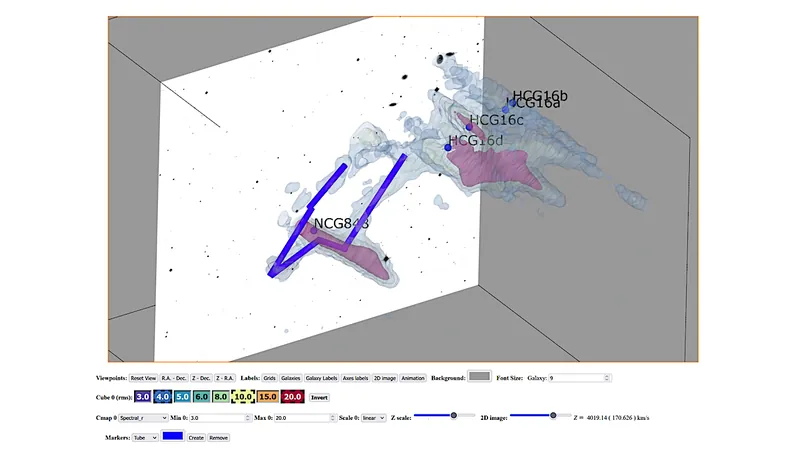
Revolutionizing Astronomy: 3D Radio Data Visualization for Open Science
2025-03-24
Author: Siti
Introduction
Next-generation telescopes are set to revolutionize our understanding of the universe, but they also introduce unprecedented technological challenges. Among them, the Square Kilometre Array Observatory (SKAO) stands out as one of the most ambitious scientific infrastructures ever conceived, with an astonishing projected data output of 700 petabytes (PB) per year. This massive influx of information will need to be efficiently distributed to a network of regional centers across the globe.
Current Technological Challenges
The current technological tools for managing such colossal volumes of data are not sufficient. Therefore, innovative research is essential to transform traditional science archives from mere data repositories into dynamic service providers that facilitate data accessibility and usability. In a recent study, researchers explored how science archives can enhance their visualization capabilities, specifically tailored for the SKA science archive.
Exploring Visualization Technologies
Through extensive examinations of existing visualization software used in both astronomy and other scientific domains, the team identified several promising tools that could meet the demands of Big Data. Using these technologies, they developed a prototype archive that enables users to access interactive 3D visualizations of radio data through user-friendly web interfaces. This innovative system adheres to the guidelines set forth by the International Virtual Observatory Alliance (IVOA), promoting interoperability and the principles of Open Science.
Prototype Features
The prototype showcases a unique service that allows for the on-the-fly generation of 3D models as part of server operations, enabling users to create remote visualizations in a highly customizable way. By adjusting parameters within the system, users can tailor the visualizations to meet their specific research needs.
Testing and Results
Initial testing utilized data from SKA precursor and pathfinder projects, which demonstrated the prototype's usability and scalability. The conclusion is promising: remote visualization is not just a theoretical concept but a practical solution for managing high-volume data. Nevertheless, the initial version of the prototype has encountered challenges related to memory limitations, leading researchers to seek innovative techniques to optimize memory usage for improved performance.
Conclusion
This groundbreaking work signals a significant step forward in the field of astrophysics, underscoring the importance of advanced data visualization tools in tackling the vast amounts of information that upcoming astronomical observatories will generate. As we move toward a new era of exploration, these advancements may pave the way for unparalleled discoveries about our universe.
Stay Tuned
Stay tuned as more exciting developments unfold in astronomy and astrophysics, revealing the mysteries of the cosmos like never before!

 Brasil (PT)
Brasil (PT)
 Canada (EN)
Canada (EN)
 Chile (ES)
Chile (ES)
 Česko (CS)
Česko (CS)
 대한민국 (KO)
대한민국 (KO)
 España (ES)
España (ES)
 France (FR)
France (FR)
 Hong Kong (EN)
Hong Kong (EN)
 Italia (IT)
Italia (IT)
 日本 (JA)
日本 (JA)
 Magyarország (HU)
Magyarország (HU)
 Norge (NO)
Norge (NO)
 Polska (PL)
Polska (PL)
 Schweiz (DE)
Schweiz (DE)
 Singapore (EN)
Singapore (EN)
 Sverige (SV)
Sverige (SV)
 Suomi (FI)
Suomi (FI)
 Türkiye (TR)
Türkiye (TR)
 الإمارات العربية المتحدة (AR)
الإمارات العربية المتحدة (AR)